Neither. You're not mentioning use case nor use case dependency but what seems to be systems dependency.
Depending on what you want to depict either each of the sites is considered a separate system or all those sites are just modules of one system.
In the former case if you are trying to show use cases of A, whatever use case requires pages B, C or D they will have to reach out to separate system, that is B. Since it is a separate system it will be an Actor for A linked to respective use case(s)
In the latter case, the use case offered to the user doesn't present internal implementation. It doesn't matter how many internal modules it has to use, it is always just a single use case.
Now, if you are trying to show that dependency in a more precise manner, it should not happen on the Use Case diagram. Instead the recommended option is usually Sequence Diagram with few other alternatives available (Communication Diagram and Activity Diagram being the most often occurring supplements).
